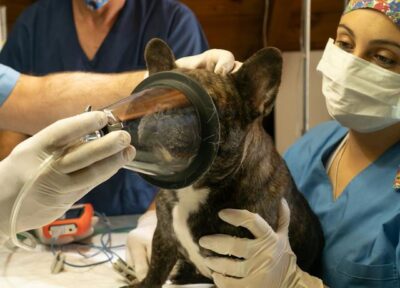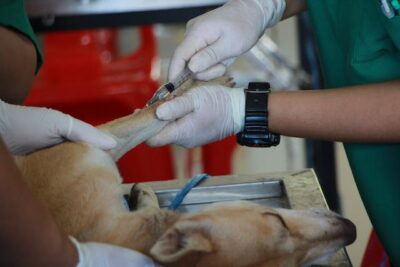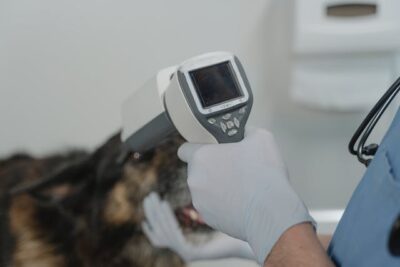Overview
- Introduction: Can Dogs Get Colds
- Understanding Canine Respiratory System
- Identifying Symptoms of Canine Colds
- Physical Signs
- Causes of Canine Colds
- Prevention Strategies
- Canine Cold Treatment Options
- Complications and Risks
- Dispelling Common Myths
- Canine Cold Transmission
- Seasonal Variations in Canine Colds
- Recognizing Canine Cold in Different Breeds
- The Role of Age in Canine Colds
- Building Canine Immunity
- Integrating Technology in Canine Health
- Environmental Factors Contributing to Canine Colds
- The Future of Canine Health Research
- Summary
- Frequently Asked Questions (FAQs)
- Conclusion
Introduction: Can Dogs Get Colds

As dog owners, we share a special bond with our furry friends. Just like us, they experience health challenges, and one common concern is whether dogs can get colds.
In this article, we’ll delve into the intricacies of canine health, exploring their respiratory system, identifying symptoms, causes, prevention strategies, and much more. Let’s embark on this journey to ensure our canine companions lead healthy, happy lives.
Brief Overview of Canine Health
Dogs, our loyal companions, have unique health needs. Understanding these needs is vital for responsible pet ownership.
Significance of Understanding Canine Colds
Can dogs get colds? While canine colds differ from human colds, they impact our dogs’ well-being. Recognizing and addressing them promptly ensures a healthier, happier life for our furry friends. Let’s explore cold symptoms, including but not limited to kennel cough, canine flu, and seasonal and environmental allergies.

Understanding Canine Respiratory System
Comparative Anatomy with Humans
Diving into the intricacies of the canine respiratory system, we’ll explore how it differs from ours and why these differences matter. This understanding lays the groundwork for comprehending how dog colds and related illnesses manifest. While dogs and humans share similarities in respiratory functions, there are notable differences in the structures of their respiratory organs.
This comparative anatomy sheds light on the unique challenges dogs may face in contracting colds and emphasizes the importance of tailored care to support their respiratory health. By delving into this nuanced understanding, pet owners can proactively take measures to safeguard their furry companions against common respiratory ailments.
Vulnerabilities in Canine Respiratory Health
Just like humans, dogs are susceptible to respiratory issues. Knowing their vulnerabilities helps us take proactive measures. Dog colds, often manifested by symptoms similar to the human cold, can include coughing, sneezing, nasal discharge, and lethargy. Kennel cough, a common dog cold, is highly contagious and can spread easily in places where dogs congregate.
Dog flu, another concern, presents with symptoms such as coughing, sneezing, nasal discharge, fever, and lethargy. Seasonal and environmental allergies may mimic cold symptoms, making it essential to differentiate between them for proper treatment.

Identifying Symptoms of Canine Colds
Behavioral Changes
Understanding how our dog’s behavior shifts during a cold helps us spot early signs and provide timely care. Dogs, much like us, may exhibit lethargy, decreased activity, and changes in appetite. Paying attention to these behavioral shifts allows us to intervene promptly and provide the necessary care for our four-legged friend.
Physical Signs
Coughing and Sneezing
Witnessing your dog cough or sneeze can be alarming. Let’s demystify these signs and understand their implications, especially when it comes to your dog’s cold symptoms. Persistent coughing may be indicative of conditions such as kennel cough or, in more severe cases, the dog flu. Monitoring the frequency and intensity of coughing helps in determining the severity of the dog’s cold, including symptoms like sore throat and dry cough.
Sneezing, when accompanied by nasal discharge, is another common symptom that warrants attention. Keep an eye out for any signs of trouble breathing or difficulty breathing, as these could indicate more serious underlying issues. Understanding these nuances in your dog’s behavior is crucial for prompt and effective care, ensuring their well-being during moments of discomfort.
Nasal Discharge
A runny nose in dogs may not be a simple inconvenience. We explore what different types of nasal discharge signify. Clear discharge may be indicative of a mild dog cold, while yellow or green discharge could suggest a more severe infection. Watery eyes and difficulty breathing may accompany nasal discharge, signaling the need for immediate veterinary attention.
Paying attention to changes in the color or consistency of the discharge, as well as observing any accompanying signs like sneezing or lethargy, can provide valuable information for prompt veterinary intervention. While canine colds are typically mild, being vigilant about these symptoms allows pet owners to take proactive measures and seek professional advice to ensure their dog’s health and comfort.

Causes of Canine Colds
Viral Infections
The primary cause of canine colds often stems from viral infections that affect a dog’s respiratory system. Various viruses, such as the canine adenovirus, parainfluenza virus, and distemper virus, can lead to cold-like symptoms in dogs. These infections are highly contagious and can spread through direct contact with infected dogs or exposure to contaminated surfaces.
Puppies, older dogs, and those with weakened immune systems are particularly vulnerable. Prevention through vaccinations is key in reducing the risk of viral infections, and responsible pet ownership involves keeping dogs away from potentially infected individuals. Recognizing the connection between viral infections and canine colds is essential for prompt intervention and safeguarding the overall health of our canine companions.
Bacterial Infections
Bacterial infections are another significant contributor to canine colds, impacting a dog’s respiratory system. Common bacteria associated with these infections include Bordetella bronchiseptica and Mycoplasma spp. Dogs often contract these bacteria in environments where they come into close contact with other infected dogs, such as kennels or crowded spaces.
Bacterial infections can also occur secondary to viral infections, further complicating the respiratory condition. Identifying the specific bacteria responsible for the canine cold is crucial for targeted treatment, often involving antibiotics prescribed by a veterinarian. Ensuring good hygiene practices, maintaining a clean living environment, and staying current on vaccinations are essential in minimizing the risk of bacterial infections and promoting the overall well-being of our canine companions.
Environmental Factors
Environmental factors play a significant role in the causes of canine colds, influencing the susceptibility of dogs to respiratory infections. Exposure to extreme weather conditions, such as cold temperatures or sudden changes in climate, can weaken a dog’s immune system, making them more prone to infections.
Additionally, crowded or stressful living conditions, poor ventilation, and inadequate hygiene practices can create an environment conducive to the spread of viruses and bacteria. Dogs in high-stress situations or those with compromised immune systems are particularly vulnerable. Pet owners can mitigate these environmental risks by providing a clean and well-ventilated living space, avoiding overcrowded areas, and ensuring their dogs receive proper nutrition and care to bolster their immune resilience against potential environmental threats.

Prevention Strategies
Vaccinations
Vaccinations act as shields against canine colds. We discuss the importance of timely shots in our dog’s health regimen. Ensuring that our dogs receive vaccinations against common viral and bacterial infections, including the dog flu and kennel cough, is a proactive measure to prevent the onset of cold symptoms. For a reliable solution against kennel cough, explore our recommended product, to enhance your dog’s respiratory health.
Environmental Modifications
Preventing canine colds involves crucial environmental modifications, such as maintaining cleanliness in living spaces through regular disinfection. Adequate ventilation is essential to reduce airborne pathogens, while protecting dogs from extreme weather conditions ensures their well-being. Managing stress is key, as it can compromise the immune system.
Regular veterinary check-ups and timely vaccinations contribute significantly to overall health, minimizing the risk of respiratory infections. Pet owners can proactively safeguard their furry companions by incorporating these practices into routine care.
Nutritional Considerations
Our dogs’ well-being depends on what’s in their food bowls. To boost their defenses, feed good quality nutrition, ensuring a balanced and nutritious diet. This supports a strong immune system and provides all the nutrients for overall health. A good quality diet prevents dog-specific illnesses, including mild colds.
Pay attention to the content of their food and water bowls for their well-being. Provide a well-rounded, good quality diet with all the nutrients they need for resilience against health issues. Remember, a healthy dog starts with the right fuel for a happy, active life.

Canine Cold Treatment Options
Medications
Navigating the world of medications, we explore what’s safe and effective for treating canine colds. When addressing a dog’s cold, it’s essential to consult with a local vet straight away. Cough suppressants, prescribed by a veterinarian, can help alleviate persistent coughing.
However, it’s crucial to note that over-the-counter medications for humans may not be suitable for dogs, and their use should be avoided unless specifically recommended by a veterinarian.
Home Remedies
Sometimes, home remedies are the best medicine. We unveil simple yet powerful remedies for your ailing dog. Maintaining a warm and comfortable environment is crucial, as it helps your dog’s immune system fight off the cold virus. Hydration is key, so ensure your dog has access to clean water.
Additionally, providing easily digestible and nutritious food supports their recovery. However, it’s important to remember that while home remedies can offer relief, veterinary guidance is essential for a proper diagnosis and treatment plan.
Veterinary Care
Knowing when to seek professional help is crucial. Learn how veterinarians approach canine cold cases. If your dog exhibits persistent symptoms, a visit to the local vet is necessary. The vet will conduct diagnostic tests to determine the cause of the respiratory infection characterized by cold symptoms.
Based on the vet’s diagnosis, appropriate medications or treatments, such as antibiotics for bacterial infections, may be prescribed. Veterinary treatment ensures a tailored approach to your pup’s vaccination history and overall health.

Complications and Risks
Long-Term Health Implications
Canine colds, if ignored, can lead to more severe issues. Let’s uncover the potential long-term consequences. If left untreated, a simple dog cold can progress into more serious respiratory infections, compromising the overall health of your pet.
In some cases, infectious canine hepatitis or canine distemper, both life-threatening diseases, may manifest. Regular check-ups with the local vet can help identify and address potential complications before they escalate.
Identifying High-Risk Situations
Certain situations make dogs more prone to colds. Understanding these risk factors is essential for preventive care. Puppies, elderly dogs, or those with weakened immune systems are at a higher risk of developing complications from respiratory infections.
Additionally, dogs in crowded or stressful environments may be more susceptible. A vet’s expertise can guide you in identifying and mitigating these risks, ensuring your dog’s well-being and preventing the onset of other dog-specific illnesses.

Dispelling Common Myths
Misconceptions about Canine Colds
Separating fact from fiction, we address common myths surrounding canine colds. One prevalent myth is that dogs cannot catch colds, but in reality, they can experience respiratory infections with symptoms akin to a human cold. Dispelling these myths is crucial for recognizing and addressing dog cold symptoms accurately.
Differentiating from Other Ailments
Understanding how canine colds differ from other ailments ensures accurate diagnosis and effective treatment. While some symptoms may overlap with other illnesses, such as respiratory infections characterized by coughing and sneezing, a vet’s expertise is vital for distinguishing the specific nature of the ailment and prescribing appropriate dog cold remedies.

Canine Cold Transmission
Human-to-Dog Transmission
Canine cold transmission, while typically associated with interactions between dogs, also raises the possibility of human-to-dog transmissions. Though it is uncommon for humans to directly transmit cold viruses to dogs, certain respiratory infections can potentially be shared. Practicing good hygiene, such as washing hands thoroughly before handling dogs, becomes essential to prevent any inadvertent transmission.
If a person is experiencing respiratory symptoms, minimizing close contact with pets, particularly face-to-face interactions, can further reduce the risk. While the likelihood of human-to-dog transmission is low, taking these precautionary measures helps maintain the health and well-being of both pet owners and their canine companions. Regular veterinary check-ups and vaccinations remain crucial for preventing and managing any potential health concerns in dogs.
Dog-to-Dog Transmission
Dogs interacting with each other can lead to the spread of colds. Let’s explore this aspect of canine social dynamics. Similar to human interactions, dogs in close proximity can transmit respiratory infections. Doggy daycare, communal spaces, and social gatherings may pose a risk of dog-to-dog transmission. Regular vaccinations, a healthy diet, and a clean environment are essential preventive measures.

Seasonal Variations in Canine Colds
Winter Vulnerabilities
Winter poses specific challenges for our dogs’ health. Discover why colder months demand extra vigilance. Cold weather can weaken a dog’s immune system, making them more susceptible to respiratory infections.
While winter vulnerabilities are a concern, providing adequate shelter, maintaining warmth, and keeping up with vaccinations help keep our four-legged friends healthy during the colder seasons.
Year-Round Risks
While winter brings its challenges, canine colds are a year-round concern. Learn how to safeguard your dog in all seasons. Dogs can catch colds at any time, not just during the traditional flu season. Year-round risks, including exposure to infected dogs, stress, and crowded environments, highlight the importance of consistent preventive measures, such as vaccinations, to keep your dog healthy and happy.

Recognizing Canine Cold in Different Breeds
Breed-Specific Considerations
Each dog breed is unique. We explore how breed characteristics influence susceptibility to colds. Certain breeds may exhibit specific vulnerabilities to respiratory infections, emphasizing the importance of understanding breed-specific considerations.
For instance, brachycephalic breeds with flat faces, such as Bulldogs and Pugs, may be more prone to respiratory issues, including those associated with canine colds.
Commonalities Across Breeds
Despite differences, some aspects of canine colds cut across breeds. Recognizing these similarities aids in early detection. Common cold symptoms, such as coughing, sneezing, and nasal discharge, can manifest in various breeds. Understanding these shared indicators helps pet owners identify potential respiratory infections promptly, regardless of the specific breed.

The Role of Age in Canine Colds
Puppies and Cold Susceptibility
Puppies, with their developing immune systems, are particularly vulnerable. Learn how to protect the youngest members of your fur family. Puppies are at an increased risk of falling prey to canine colds due to their immature immune systems.
Providing a warm and clean environment, regular veterinary check-ups, and adhering to the pup’s vaccinations schedule are crucial preventive measures. These steps help fortify their defenses and ensure a healthy start for your newest family member.
Senior Dogs and Immune Challenges
Aging brings its own set of challenges. We explore how senior dogs face colds and ways to support their immune systems. Senior dogs may experience a decline in immune function, increasing the dog’s risk of respiratory infections, especially during the cold season.
Regular vet check-ups, a balanced diet, and appropriate exercise contribute to maintaining the health of aging dogs and reducing the risk of cold-related complications. It’s essential to be vigilant during cold seasons to minimize the risk of viral illness and take extra precautions, especially if your senior dog encounters an infected dog.

Building Canine Immunity
Importance of a Strong Immune System
A robust immune system is a dog’s best defense. Discover strategies to bolster your dog’s immunity. A strong immune system is essential in preventing and combating canine colds. Proper nutrition, regular exercise, and minimizing stress are key factors in maintaining optimal immune function in dogs.
Strategies for Strengthening Immunity
Practical tips and lifestyle adjustments that contribute to a stronger, healthier canine immune system. Ensuring your dog receives a balanced diet with essential nutrients, engaging in regular exercise, providing mental stimulation, and minimizing exposure to environmental stressors all play a role in strengthening your dog’s immune system. Additionally, maintaining a clean living space and regular veterinary care contribute to overall immune health.
Integrating Technology in Canine Health
Apps for Monitoring Canine Health
Explore the tech-savvy side of canine care with apps designed to keep your dog’s health in check. In today’s digital era, there is a plethora of apps that cater to various aspects of canine health. These apps can help monitor dog cold symptoms, track vaccinations, and provide timely reminders for veterinary appointments.
Leveraging technology in this way enhances the convenience of pet care and ensures that dog owners stay proactive in maintaining their pets’ well-being.
Telemedicine and Veterinary Consultations
In the digital age, veterinary care has evolved. Learn how telemedicine benefits both dogs and their owners. Telemedicine offers a convenient and efficient way to consult with veterinarians, especially when addressing dog’s symptoms or other health concerns.
Remote veterinary consultations enable timely advice, reducing the need for physical visits and providing quick insights into preventive measures and potential treatment options.

Environmental Factors Contributing to Canine Colds
Indoor Air Quality
Our homes can harbor unseen threats. Discover how indoor air quality affects our dogs’ health. The air quality inside our homes can impact our dogs’ respiratory health.
Maintaining good indoor air quality through proper ventilation, regular cleaning, and minimizing exposure to pollutants contributes to preventing respiratory infections, including canine colds.
Outdoor Risk Factors
Exploring the great outdoors comes with risks. We discuss the environmental factors that contribute to canine colds. Dogs are exposed to various elements outdoors, and certain factors like cold weather, damp conditions, and encounters with infected dogs can contribute to the risk of canine colds. Awareness of these outdoor risk factors allows pet owners to take preventive measures, such as proper grooming and avoiding crowded areas.

The Future of Canine Health Research
Advancements in Veterinary Science
Stay informed about the cutting-edge developments shaping the future of canine health. Ongoing advancements in veterinary science, including research on respiratory infections and preventive measures, contribute to a better understanding of canine health. Staying informed about these developments empowers dog owners to make informed decisions for their pets’ well-being.
Emerging Treatments and Preventive Measures
What’s on the horizon for preventing and treating canine colds? We explore promising advancements. Researchers are continually working on innovative treatments and preventive measures for canine colds. Keeping abreast of emerging therapies and preventive strategies ensures that dog owners can make informed choices in managing and safeguarding their pets’ respiratory health.
Summary
Key Takeaways
Summing up the crucial points to remember for maintaining your dog’s respiratory health:
- Dogs Get Colds: Contrary to common misconceptions, dogs can indeed get colds, and recognizing the symptoms is essential for timely care.
- Interactions with Other Dogs: Dogs interacting with other dogs, especially in crowded places or doggy daycares, can increase the risk of respiratory infections.
- Preventing Dog Flu: Proactive measures, including vaccinations, maintaining a clean living environment, and avoiding exposure to infected dogs, are key in preventing dog flu and other respiratory illnesses.
- Infected Dog Risks: Identifying and isolating an infected dog helps prevent the spread of respiratory infections to other dogs in the household or community.
Recapitulation of Main Points
A concise recap to reinforce the essential information shared in this comprehensive guide:
- Canine colds are a reality, and understanding symptoms, preventive measures, and treatment options is crucial for responsible pet ownership.
- Interaction with other dogs poses a risk of respiratory infections, emphasizing the need for vigilant monitoring and preventive care.
- Proactive steps, such as vaccinations, telemedicine consultations, and leveraging technology, contribute to effective canine health management.
- Environmental factors, both indoor and outdoor, play a significant role in a dog’s susceptibility to colds, necessitating attention to air quality and outdoor risks.
- Ongoing advancements in veterinary science and emerging treatments highlight the importance of staying informed for optimal respiratory health management in dogs.

Frequently Asked Questions (FAQs)
- Can dogs get runny noses like humans?
- Yes, dogs can develop runny noses, especially if they catch a cold or experience other respiratory issues.
- Do dogs catch colds from humans, and is it the same cold?
- Dogs can contract respiratory infections that may exhibit cold-like symptoms, but it’s not necessarily the same cold virus that affects humans.
- Can canine distemper be mistaken for a common cold in dogs?
- Yes, canine distemper is a serious respiratory infection characterized by symptoms that may resemble a cold in dogs.
- Should I be concerned if my dog’s toys are shared with other dogs?
- Sharing toys with other dogs may contribute to the spread of infections. It’s advisable to regularly wash and sanitize your dog’s toys.
- My vet suspects a respiratory infection in my dog. What should I do?
- Follow your vet’s advice for treatment and care. Respiratory infections in dogs may require specific medications and supportive measures.
- Can dogs with colds exhibit changes in energy levels?
- Yes, dogs with respiratory infections may not have the same energy levels as usual. If you notice a significant change, consult your vet.
- Is stock piling tissues essential for my dog with a cold?
- While dogs don’t use tissues like humans, it’s essential to have necessary supplies for cleaning and maintaining hygiene, such as pet-safe wipes.
- Do dogs simply recover from colds, or is veterinary care necessary?
- Mild cold symptoms in dogs may improve with rest and care, but it’s crucial to seek veterinary advice for proper diagnosis and treatment.
- Should I separate my sick dog’s water bowls from healthy dogs?
- Yes, separating water bowls can help prevent the spread of infections among dogs in a multi-pet household.
- Can my dog still play with its favourite toys while having a cold?
- Depending on your dog’s energy levels, it’s okay for them to engage with their favorite toys, but monitor their activity and ensure they get sufficient rest.
Conclusion
In our journey through understanding canine health and colds, we’ve empowered ourselves as responsible dog owners. Let’s actively implement this knowledge, ensuring our beloved companions lead the healthiest, happiest lives possible. A proactive approach to canine well-being starts with us.
For further insights and valuable information on puppies and dogs, check out our other articles. These resources can be particularly helpful for dog lovers and owners looking to enhance their understanding and care for their furry friends.




